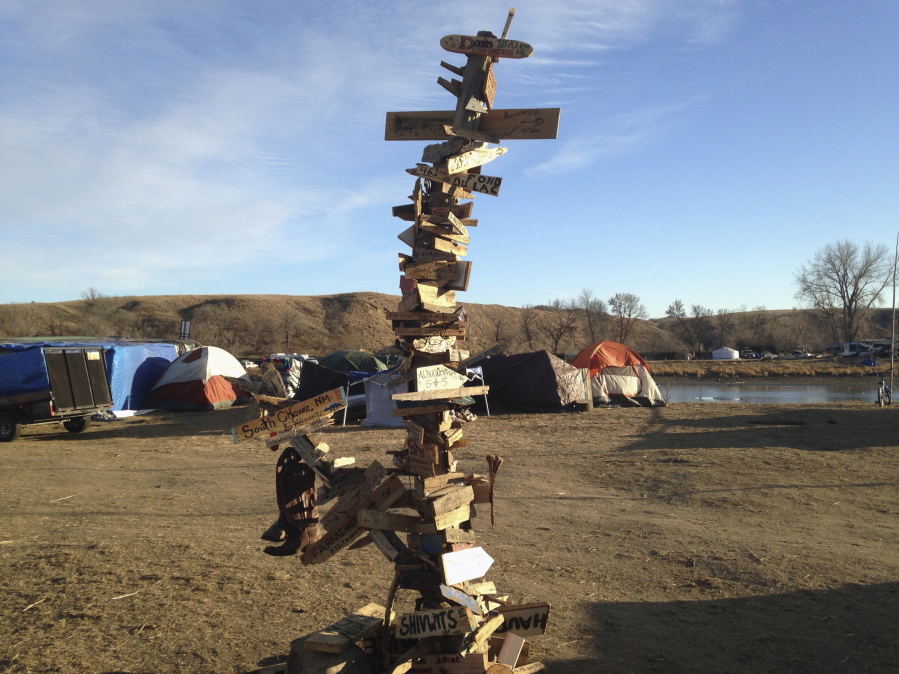BISMARCK, N.D. — A centerpiece of a sprawling camp that evolved on disputed land in southern North Dakota to protest the four-state Dakota Access pipeline is going on display at the Smithsonian Institution’s National Museum of the American Indian in Washington, D.C.
The nearly 12-foot-tall mile-marker post was constructed by protesters to show the distances they had traveled from around the globe. Points of origin on hand-crafted signs nailed to the post ranged from Fort Buffalo 50 yards away to Sapmi in the Arctic, home of the Sami indigenous peoples, 3,900 miles away.
When the camp was forced to disband in February, Hickory Edwards of the Onondaga Nation took the post and donated it to the museum, which is putting it on public display Tuesday as part of an exhibit called “Nation to Nation: Treaties Between the United States and American Indian Nations.”
“When more than 12,000 activists and hundreds of Native Nations assembled in North Dakota during 2016 to protest the Dakota Access pipeline, treaties were at the heart of the issue,” museum Director Kevin Gover said.
Opponents maintained that the $3.8 billion pipeline to move North Dakota oil to Illinois violated Native rights. The protest camp itself was on federal land that American Indians maintained still belonged to them under old treaties.
Thousands of people flocked there, many of them enduring a harsh winter and many clashing with police. There were 761 arrests between August 2016 and February 2017, when authorities shut down the camp in advance of spring flooding season.
Edwards, who erected the poll in September 2016, made a special trip to retrieve it the night before the camp was closed. In all, he made five trips from his home in Nedrow, New York, to the camp — a distance of about 1,800 miles.
“When people came (to the camp), and they would see all these people in the middle of the Plains, miles and miles and miles out in the middle of nowhere, they would ask, ‘Where did all these people come from?'” he said Monday. “We would point to this mile-marker post, and we would say, ‘everywhere.'”
Michelle Cook, a Navajo who traveled about 1,600 miles from Arizona to the camp, on Monday called it “an incredible moment of cultural and historical significance, not only for American Indian people, but for our country and the world.”
“To have that monument be recognized and acknowledged and honored is incredibly important, to remember and to celebrate what was sacrificed by the people,” she said.
The post will be the final piece of the exhibit that deals with the issue of treaties by “reaching way back in time and really bringing it to the present,” museum spokeswoman Bethany Bentley said. It will remain on display through 2021.



